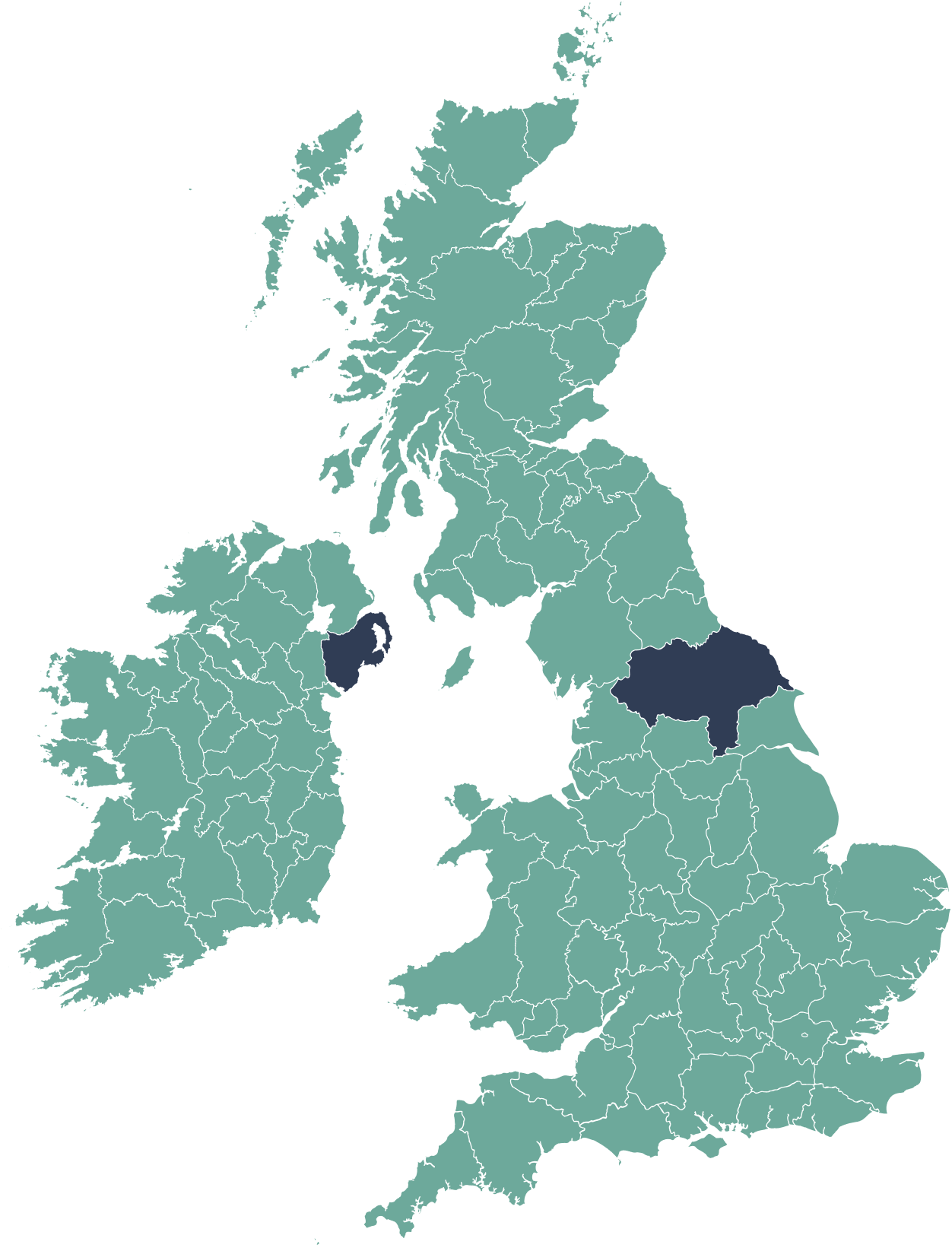In-House Research supported the planting of 800 climate resilient trees across the UK in 2024-25
In-House Research is proud to be working in partnership with GreenTheUK and the Royal Forestry Society (RFS) to plant climate-resilient trees across the UK’s woodlands. This collaborative initiative brings together the RFS’ 140+ years of forestry expertise and GreenTheUK’s community-driven approach to ensure every tree planted contributes to a wider, lasting environmental legacy.
The RFS is a leader in sustainable woodland management. With deep-rooted knowledge passed down through generations, they understand that healthy, thriving woodlands depend not only on the trees we plant, but how we care for them. Our woodlands are managed with both climate and biodiversity in mind.
This partnership is helping to strengthen the resilience of UK woodlands against pests, diseases, and the accelerating impacts of climate change. Increasingly frequent extreme weather events including floods, droughts and storms are placing additional stress on trees. Weaker trees are far more vulnerable to disease and pests. By planting a broader mix of tree species, including some non-native and naturalised varieties, we improve the overall health and adaptability of woodland ecosystems, giving them a better chance of survival in the face of climate change.

While native species are brilliant for biodiversity, we simply don’t have enough of them to ensure resilient sustainable woods and trees for the future. Many of our native tree species are under threat from new and existing pests and diseases. That’s why diversifying our woodlands is key. If we plant a wide variety of tree species (both native and non-native) we will help to ensure that at least some species will survive future threats. Tree cover habitats will be maintained and our native wildlife will have new and existing trees that they can depend on. Encouragingly, species like red squirrels have already adapted to living in some non-native conifer woodlands because of the ample food supply their cones provide. According to the Forestry Statistics 2024, woodland cover in the UK now stands at 13.5%, with 20,660 hectares of new woodland created in 2023/24, a positive step toward the government’s target of 30,000 hectares annually. With support from businesses like In-House Research, we can help ensure that number continues to grow each year.
Expanding woodland cover plays a vital role in tackling climate change. Woodlands store an estimated 4,000 million tonnes of carbon in the UK alone, according to the Save Our Wild Isles campaign. Beyond carbon capture, trees help stabilise soils with their extensive root systems, reduce flood risk by intercepting rainfall with their canopies, and improve water retention in the ground. Some trees can even signal distress through chemical messaging when under attack, giving nearby trees a chance to defend themselves, a remarkable form of natural resilience.
Yet despite all this, the UK remains the second-largest importer of wood products in the world, much of it for use as biofuel. Relying on imports not only undermines our green credentials, but also increases the risk of introducing new pests and diseases to our woodlands.
That’s why responsible, UK-based tree planting guided by expert partners, like the Royal Forestry Society and GreenTheUK, is so important. It’s about planting the right trees, in the right places, and caring for them in the right way so our woodlands can thrive for generations to come.
Tree Species Planted:
400 trees planted in North Yorkshire
This project aspires to enhance the biodiversity in the area by opening up the rides (tracks), planting up a mixture of attractive species on the edges of the commercial compartment, and to complement the neighbouring wetland and grass farmland. By creating more space between crops it allows more light to reach the woodland floor, inviting more species including birds, butterflies, insects, invertebrates and ground flora.
400 trees planted in County Down
This woodland is long established and much of the woodland has been continuously present for at least 200 years. Much of the habitat was a conifer high forest, which doesn’t provide a great amount of diversity for wildlife habitats. The areas that were clear-felled were replanted with a mix of species, selected with resilience and diversity in mind. The estate is converting to a Low Impact Silvicultural System (LISS) woodland management approach in an effort to enhance the species, structure, biodiversity and landscape aesthetics of the estate woodlands.

UN's Sustainable Development Goals
As a GreenTheUK partner, you support projects that are in line with the UN Sustainable Development Goals.

Take urgent action to combat climate change and its impacts.

Sustainably manage forests, combat desertification, halt and reverse land degradation, halt biodiversity loss.

























































.jpg)
.jpg)
.jpg)
.jpg)
.jpg)
.jpg)
.jpg)
.jpg)
.jpg)
.jpg)
.jpg)
.jpg)